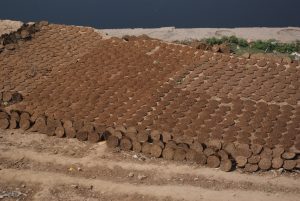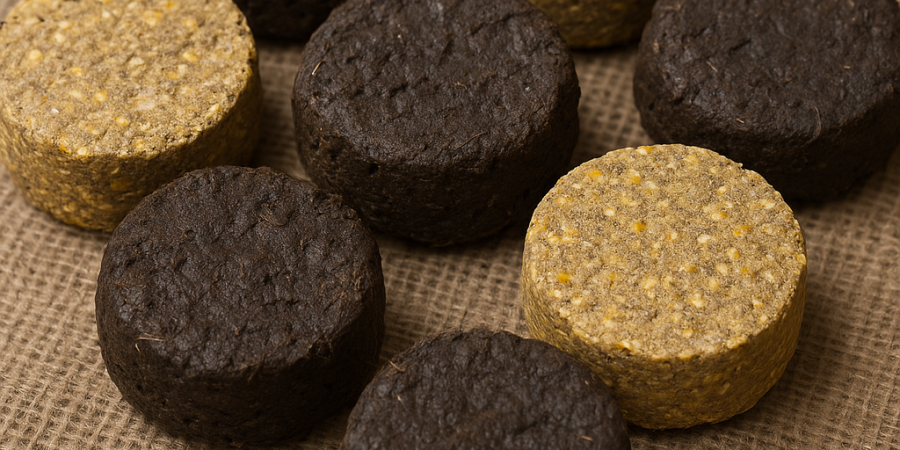Charcoal is a great fuel to fire up your braii stand or mbaula, with a reliable burn and a low smoke output. However, every time you use charcoal or firewood for cooking, you are contributing heavily to deforestation and greenhouse gas emissions. As climate change becomes a more urgent concern, finding eco-friendly fuel alternatives is essential. One surprisingly effective solution lies in agricultural waste, especially maize cobs and cow dung which are abundant, renewable, and often discarded.
In Zambia, the Ministry of Green Economy and Environment is piloting projects that turn agricultural waste into sustainable energy, including maize-based charcoal. NGOs like MSA (Mid-Sized African social enterprise) are also training communities in rural areas such as Mumbwa to produce eco-friendly briquettes using maize cobs and other biomass, supporting both energy access and environmental conservation.
By turning waste materials into charcoal briquettes, we not only reduce environmental harm but also create affordable, smokeless fuel for cooking and heating. This blog post walks you through how to make eco-friendly charcoal using maize cobs and cow dung.
Make extra income from what was previous considered as waste
Imagine yourself fascinated by a pile of cow dung on the road. Not a good site right? Well, this is a natural resource that you should be exploring. You can use cow dung and maize cobs to make charcoal. Just like wood, the science is baffling. Burning wood in the open air, turns it to ash. However, burning it in a closed space, turns to charcoal, and then to ash. Therefore, wood is burnt in an enclosed space, but not left long enough to become ash. Before I show you how to turn cow dung and maize cobs to charcoal, I just want to highlight a few advantages:
Why Use Maize Cobs and Cow Dung?
Maize Cobs
- Readily available after harvest
- High lignin content makes them suitable for carbonization
- Burn cleaner than wood-based charcoal
Cow Dung
- Often left unused or underutilized
- Contains organic material perfect for fuel when dried and processed
- Helps reduce methane emissions when reused properly
Both cow dung and maize cobs:
- Are widely available
- Require minimal processing
- Are easy to light, burn very hot and leaves few ashes
- Maize cob and cow dung charcoal means ZERO reliance on tree’s or LPG gas for fuel.
How to make your charcoal burner
Materials:
Ordinary drum (5.5 galon capacity)
Chimney on top
Opening on top
Sets of air ventilation, 1 foot apart with ½ inch holes equally distributed around the drum (to obtain even burning)
Rounded wood 4 inches in diameter
Rag to be ignited from the bottom
Cow Dung Procedure

1. Mix in one pail or container: 1 part rice hull, 6 parts cow dung (or horse)
2. Place weight in mixture to remove excess water.
3. Pour in molds with both ends open (to remove easily when it gets hard).
4. Remove from molds and dry under the sun for three to four days.
Maize Cobs Charcoal Procedure:

1. Use a perforated 200L drum with a lid and fill with cobs
2. Ignite from the base and cover partially to restrict oxygen.
3. Allow to carbonize for several hours and when smoke stops, remove the contents of the drum.
4. Water the maize cobs until the fire is put off.
5. Lay the corn cobs on the ground and let the drum dry.
6. Separate the charcoal from the ashes.
7. Keep in a container
Option B: Cow Dung + Maize Cob Charcoal
- Mold into briquettes or press into a charcoal press.
- Mix dried cow dung with maize cob charcoal powder (ratio: 2:1).
- Add a binder like clay.
- Add enough water to make a thick paste.
- Place under the sun on a raised rack or tarp.
- Let them dry for 3–7 days
Extra Tips
- Use molds or hand-presses to improve shape and consistency.
- For community projects, organize training workshops with local cooperatives.
- Store briquettes in a dry, well-ventilated area to avoid mold and moisture damage.
Making eco-friendly charcoal from maize cobs and cow dung is more than a clever recycling idea, it’s a climate-smart, practical solution for energy challenges in low resource settings. This approach reduces deforestation, manages agricultural waste, and empowers communities with cleaner, more sustainable cooking options.
Let’s rethink “waste” and turn it into opportunity.
